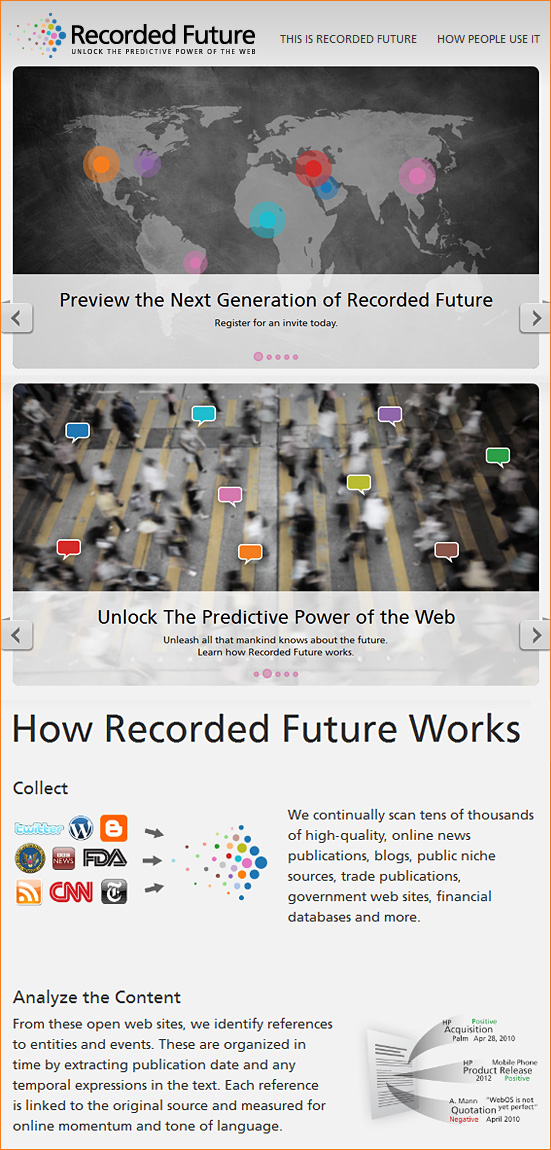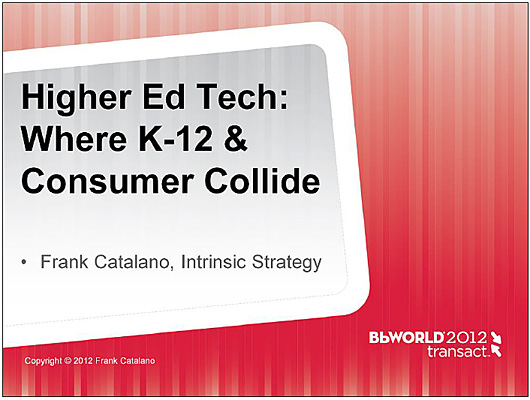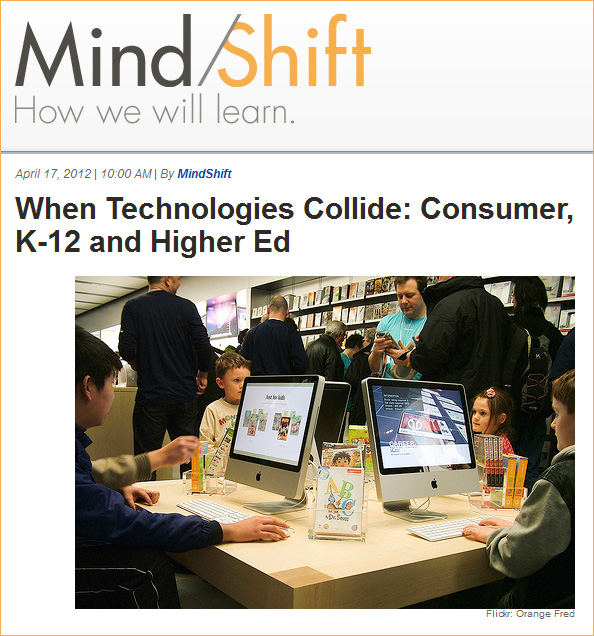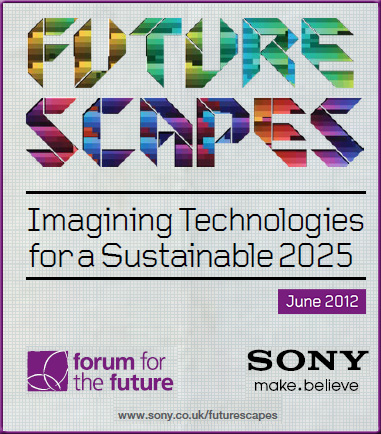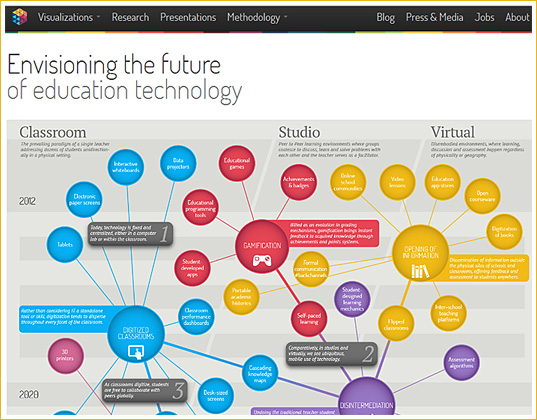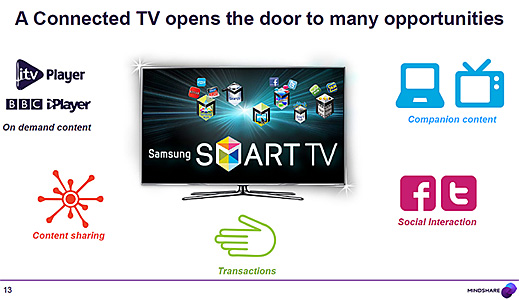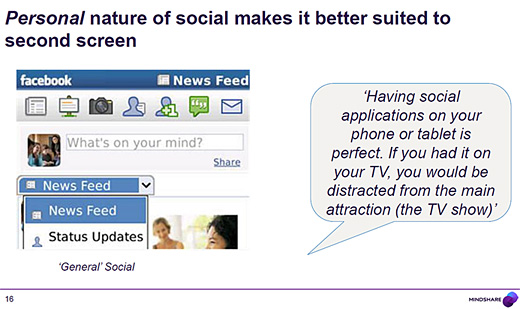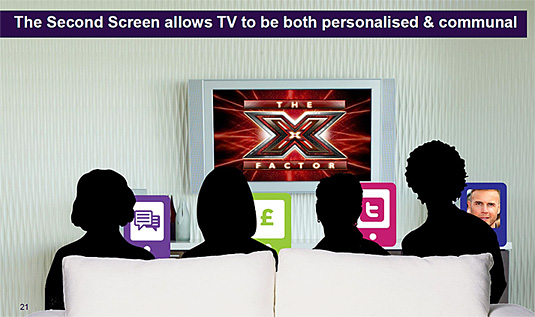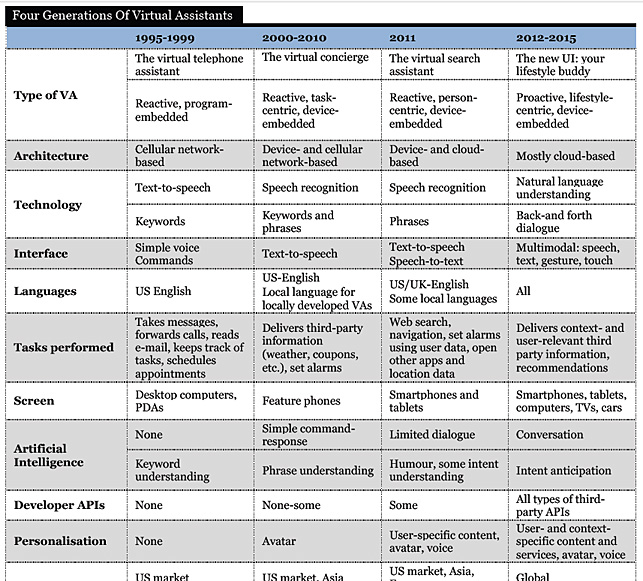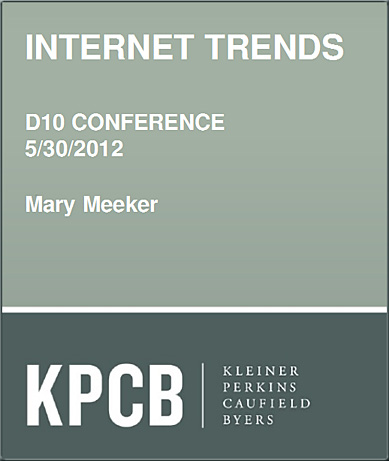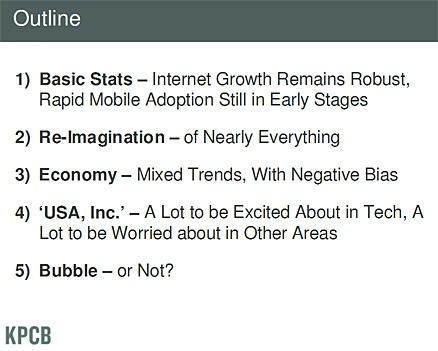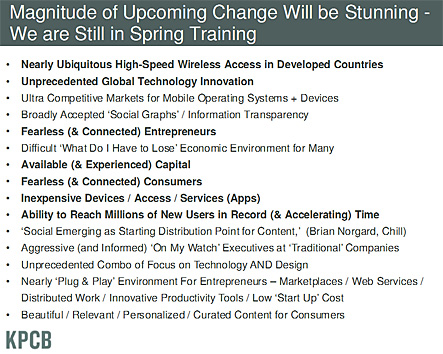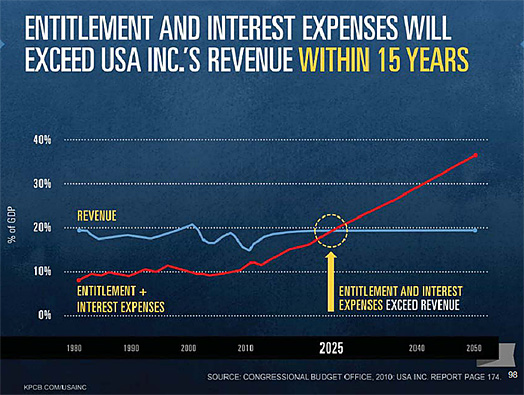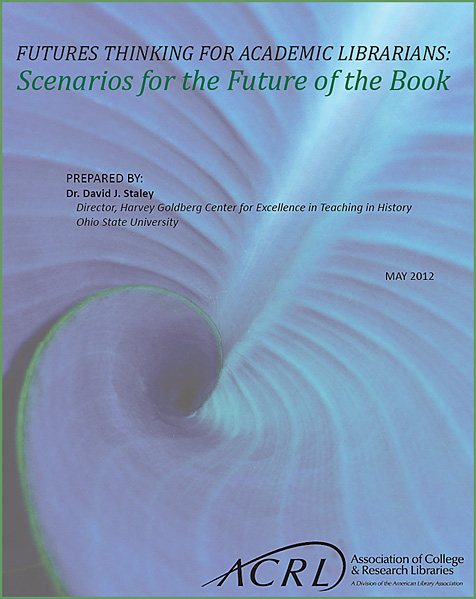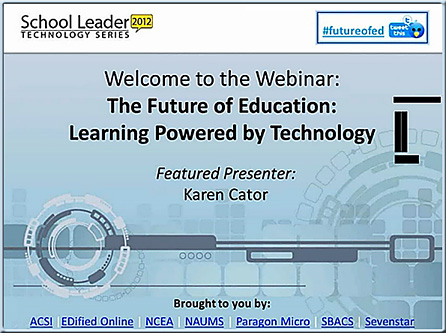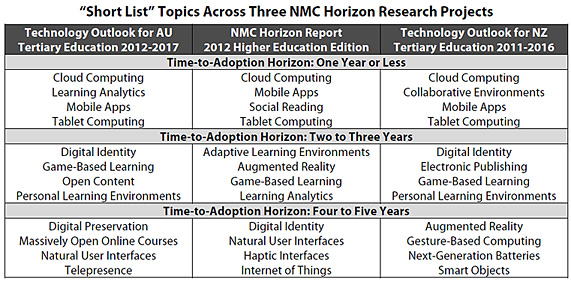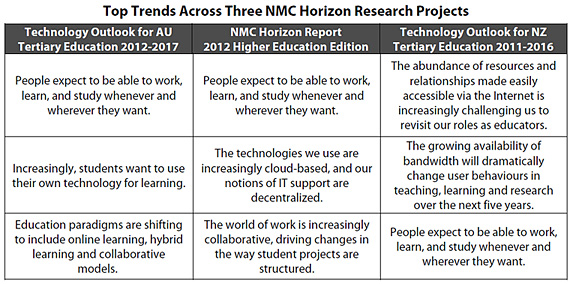Welcome to FutureScapes: What do you think life will be like in 2025?
FutureScapes is an exciting collaboration project that aims to explore the potential of technology and entertainment to create a better, more sustainable world in 2025. It’s not about predicting the future so much as imagining the possibilities. We face an infinite number of possible futures ahead of us. But one thing is clear: the world of 2025 will be very different from the one we live in today.
Since September 2011, the FutureScapes collaboration has brought together some of Europe’s best thinkers, doers, writers and inventors. Their brief was to explore how technology can help us live better, more sustainable lives in 2025. After an extensive research capture phase, specific concepts were developed in two workshops, one in Paris and one in London, and have since been refined by design and innovation partners Superflux, The Pipeline Project and Engage by Design.
Envisioning the future of education — from envisioningtech.com by Michell Zappa
Excerpt:
Models of teaching worldwide are being revolutionized and reconsidered in real-time, and it seems everybody is looking for the holy grail of how to future-proof their classrooms. Advancing technology is leaving old schools of thought in their wake, and teachers are waking up to the fact that things will only speed up further in the foreseeable future.
Having spent time with the wonderful people at TFE Research in Dublin earlier this year, our new visualization is a concise overview of technologies that have the potential to disrupt and improve teaching on all levels.
Along with a few dozen emerging techs, we identified six key trends that link and contextualize said technologies, including classroom digitization, gamification and disintermediation.
.
Future of…connected TV — by Mindshare
- Connected TV penetration & usage will lag behind second screens
- Most of the opportunities that connectivity creates are better suited to the second screen
- Connected TV usage will mostly focus on video
- For advertisers, the real opportunity lies on the second screen
.
.
.
Also see:
- 5 iTV & T-Commerce Highlights from TVOT Day Two — from the Inside the Screen blog
- The Smart TV Alliance: LG and TP Vision create a unified software ecosystem — from theverge.com by Jeff Blagdon
- Uncharted Territory for Content Delivery: Smart TVs — from cmswire.com by Martin Rapavy
Plasma First: Apple TV, SmartGlass and the New World of Multi-Screen Cloud Content –– from forbes.com by Anthony Wing Kosner
Excerpt:
The future for web developers is big. 50 inch plasma screen big. After an intensive cycle of trying to figure out how to take desktop websites and make them look and work great on mobile devices (often by starting from scratch) the pendulum is swinging to the other end of the multi-screen spectrum—the family TV, the conference room monitor, the classroom SmartBoard.
Also see:
- Brightcove CEO Allaire on How New Apple TV Experience Will Change Home, Work, Advertising –– from forbes.com by Anthony Wing Kosner
Excerpt:
ACRL has released a new research report, “Futures Thinking for Academic Librarians: Scenarios for the Future of the Book,” to help librarians reexamine their assumptions, which may be grounded in the current e-book zeitgeist. Authored by David J. Staley, director of the Harvey Goldberg Center for Excellence in Teaching in the History Department of Ohio State University, the report is a companion to the 2010 report Staley co-authored for ACRL, “Futures Thinking for Academic Librarians: Higher Education in 2025.”
Techs related to transmedia storytelling may pave the way nicely for more educationally-related apps
From DSC:
As the massive convergence of the computer, the telephone, and the television continues, other trends are also taking place that may eventually impact how we interact with educationally-related content. That is, the main screen of our living rooms might be delivering a 5-10 minute “lecture”, but our tablets and smart phones may be in our laps as we interact around this content with others.
Along these lines, as transmedia storytelling develops, the use of multiple devices and methods to consume and contribute to content may be setting the stages for how things can get done with more educationally-related applications.
Consider this excerpt from Complex TV: Transmedia Storytelling — by Jason Mittell, Associate Professor of American Studies and Film & Media Culture at Middlebury College:
As television series have become more complex in their narrative strategies, television itself has expanded its scope across a number of screens and platforms, complicating notions of medium-specificity at the very same time that television seems to have a clearer sense of distinct narrative form. This chapter explores how television narratives are expanded and complicated through transmedia extensions, including video games, novelizations, websites, online video, and alternate reality games. With specific analyses of transmedia strategies for Lost and Breaking Bad, I consider how television’s transmedia storytelling is grappling with issues of canonicity and audience segmentation, how transmedia reframes viewer expectations for the core television serial, and what transmedia possibilities might look like going forward.
Also relevant/see:
- Please don’t ruin the second screen — from techcrunch.com by Somrat Niyogi
Excerpt:
The second screen space is going to be a multi-billion dollar market. Just last week, Tim Cook announced that 67M iPads were sold in less than two years. It took more than 24 years to sell that many Macs. With the growing trend of second screen activity (i.e. using tablets while you watch TV), there is bound to be major disruption in the TV industry. - Comcast connects Skype HD videoconferencing to the living room TV — from networkworld.com by Larry Hettick
Excerpt:
With the Skype on Xfinity service customers will also be able to:
• Make and receive Skype-to-Skype video and audio calls or send instant messages via Skype on a TV while watching their favorite TV show at the same time, and accept incoming Skype calls during a TV show with the help of Caller ID.
• Import Skype friends into a global address book which can also contain Facebook, Outlook, Gmail and smartphone contacts so subscribers can find friends who already use Skype and see when contacts are online and available to talk.
• Communicate with the hundreds of millions of connected Skype users around the globe, whether on a Skype-enabled TV, PC or mobile device. - A TV platform so disruptive everyone’s suing it — from fastcompany.com by David Zax
Excerpt:
We chat with Chet Kanojia of Aereo, the new TV-where-and-when-you-want-it service that has a few legal troubles. Could Aereo finally disrupt the loathed cable bundle–and TV altogether? - Now serving the latest in exponential growth: YouTube!— from singularityhub.com by David J. Hill.
.

Addendum on 6/2/12
A couple of nice illustrations from What’s Next for Education: The New Course Ecosystem that depict the need for learning ***ecosystems*** — from yesterday’s presentation by Blackboard’s Katie Blok and Outsell’s Kate Worlock
A recent survey notes that students are purchasing tablets and mobile devices at a rate far faster than predicted. And, it’s no surprise that the greatest growth sector in education is expected to be in the adoption of digital textbooks, multimedia and tools, a sector that topped the $1 billion dollar mark in 2011. Content is not the only area in higher education undergoing transition. The mission of the learning management system (LMS) seems to be changing also. All types of content will soon be accessible within a single course experience, uniquely delivered by the learning management system. With the LMS as a new channel for digital content, instructors and students both can expect manifold benefits from greater choice in teaching materials to more options for consuming instructional content. During this event, you will hear an insightful view into the evolution of digital technology in the higher education landscape.
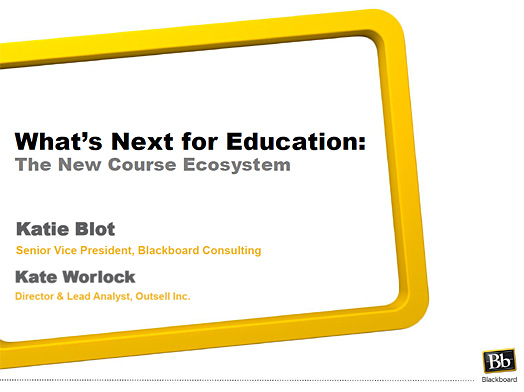
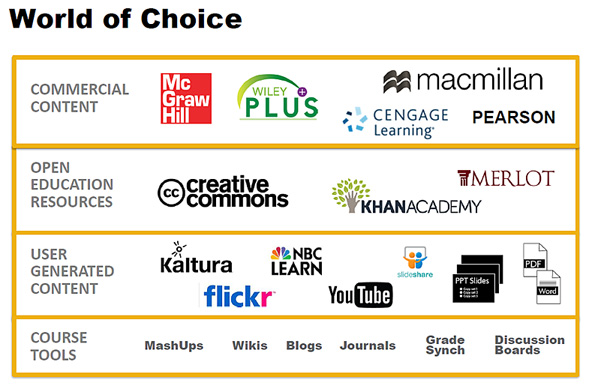
.
.
.
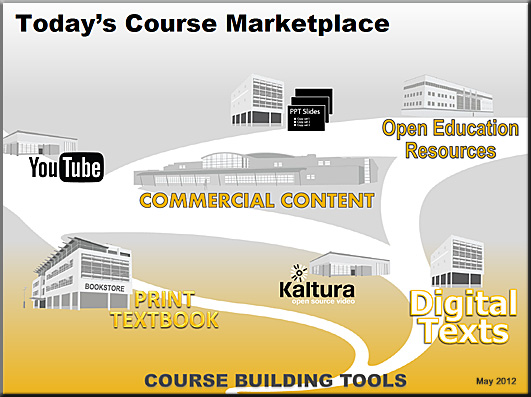
.
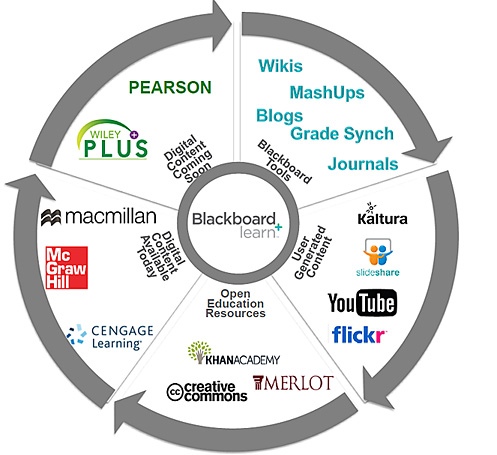
I’m not so sure it will be the LMS or CMS that will host all of this…at least not the type of CMS/LMS systems that we know of today. A cloud-based marketplace of educational apps — that save results to cloud-based learner profiles — may be more likely.









